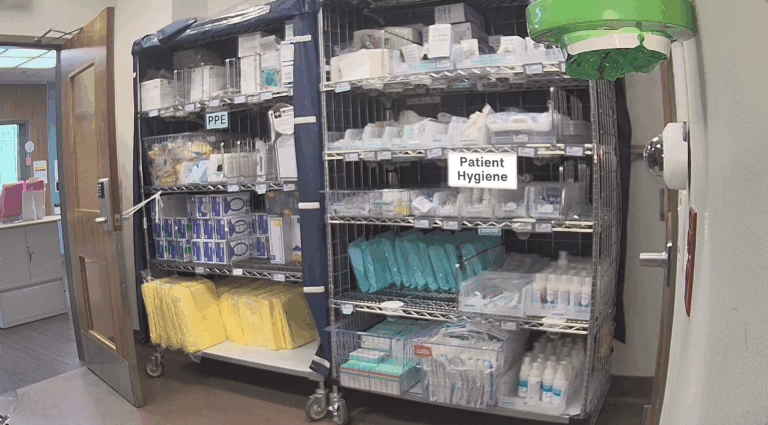Hospitals are under pressure to modernize supply chain operations while meeting stricter security expectations. Inefficiencies in ordering, visibility gaps, and manual tracking still disrupt clinical readiness. At the same time, security reviews have become longer and more complex as boards and CISOs respond to rising cyber risk.
According to IBM’s 2025 Cost of a Data Breach Report, healthcare remains the most expensive industry for cyber incidents, averaging $7.42M per breach. For executives, this is more than a financial liability. It is a governance issue that determines how quickly new automation projects can be approved.
This is why the Software Bill of Materials, or SBOM in healthcare, is gaining attention. SBOMs provide a transparent inventory of the software components in automation platforms. For hospital leaders evaluating hospital supply chain automation and AI supply chain security, SBOMs are becoming a critical enabler of secure adoption.
What Is an SBOM in a Hospital Context?
Adopting new hospital technology is never just about features. Every system that connects to ERP, EHR, or supply systems must pass governance reviews. Those reviews are taking longer as cyberattacks on healthcare escalate.
The Cybersecurity and Infrastructure Security Agency (CISA) and the Department of Health and Human Services (HHS) have both issued alerts naming software supply chain risk as a top threat to hospitals. Health-ISAC’s 2025 Threat Report also ranks supply chain compromises among the five most urgent risks facing healthcare delivery organizations. According to ISA guidance on software supply chain risk, unknown or outdated components remain a primary entry point for ransomware groups.
Recent examples show how this risk extends beyond IT. Ransomware groups have exploited flaws in widely used remote management software, creating downstream exposure for hospitals that rely on those tools. At the same time, attackers are targeting laboratories, blood centers, and pharmacy cooperatives that supply hospitals. When these less visible nodes are disrupted, the impact ripples back into providers, directly affecting inventory readiness and patient care.
The implication for executives is straightforward: automation cannot advance without stronger transparency. SBOMs provide that visibility, giving risk teams the documentation needed to identify vulnerabilities early and respond to board and auditor questions with evidence.
SBOM and Hospital Supply Chain Automation
Hospital supply chains are becoming more complex, and the software that supports them is no exception. Leaders exploring automation are not just buying a single application. They are evaluating platforms that include computer vision models, machine learning engines, APIs that connect to ERP and EHR systems, and analytics that forecast demand. Each layer adds value, but each layer also adds potential risk. Without visibility, it is difficult for security teams to assess the full system.
This is where the SBOM in healthcare moves from theory to practice. An SBOM provides a clear list of the components inside the automation platform. For a system that monitors storerooms, tracks inventory, and predicts usage, that transparency is critical. It allows hospital security teams to check whether any libraries or modules are tied to known vulnerabilities. It also lets compliance officers show auditors that they have visibility into the software powering hospital supply chain automation.
For hospitals advancing automation, SBOM transparency pairs directly with AI for healthcare inventory management, ensuring platforms can be deployed securely while delivering operational value.
Executives also see value in resilience. Predictive analytics only create impact if they can be trusted. If a vulnerability is discovered in a common software component, hospitals with an SBOM can quickly identify whether their automation platform is affected and request a fix. Without that visibility, organizations remain exposed longer, increasing the risk of disruption.
SBOM in Governance and Compliance
Every new hospital technology must clear more than technical validation. It has to withstand governance reviews and compliance checks. Boards, auditors, and regulators want assurance that systems will not create hidden vulnerabilities. For leaders, this is where the SBOM in healthcare becomes a practical governance tool.
Frameworks already in use by most hospitals, such as HITRUST and NIST, emphasize visibility and control of third-party risk. SBOMs support these requirements by giving security teams a component-level inventory they can map directly to known vulnerabilities and regulatory expectations. When an auditor asks how a hospital tracks software risk across its automation platforms, an SBOM provides evidence that the organization has visibility and a review process in place.
CISA and HHS advisories have reinforced the point: software supply chain risk is one of the top threats facing hospitals. They highlight how unknown or outdated components create exposure for critical systems. An SBOM makes those components visible, turning an abstract risk into a documented list that can be assessed and mitigated.
For hospital leaders evaluating AI supply chain security and hospital supply chain automation, this translates into fewer delays during governance reviews. Instead of extended back-and-forth between vendors and internal security teams, boards and compliance officers can see that the platform aligns with industry frameworks and regulatory expectations.
Practical Takeaways for Leaders
Hospital executives do not need to become software engineers to benefit from SBOMs. What matters is knowing what to ask for and how to use it in the procurement and review process. Clear requests ensure vendors provide the transparency required for faster, safer adoption of automation.
When evaluating hospital supply chain automation platforms, leaders can take a few straightforward steps:
- Ask for an SBOM in a recognized format. Two formats are most common: SPDX and CycloneDX. Either one provides a structured way to list all software components.
- Require updates with each release. Every update may introduce new dependencies. Requiring a refreshed SBOM ensures that reviews keep pace with product changes.
- Clarify how vulnerabilities will be disclosed. If a component listed in the SBOM is later flagged in a federal advisory or vulnerability database, hospitals need to know how quickly the vendor will notify them and what the remediation path looks like.
- Tie SBOMs to compliance reporting. Hospitals can use the SBOM as evidence when preparing for HITRUST or NIST audits.
The same principle applies to AI-driven demand forecasting in hospital supply chains where ongoing visibility ensures predictive models stay accurate and aligned with real-world supply usage.
Embedding these requests into procurement language reduces review cycles and ensures that predictive analytics and inventory automation are deployed securely.
How Chooch AI Aligns with SBOM Expectations
SBOMs are emerging as a standard request in hospital governance reviews. Executives want assurance that automation platforms can demonstrate transparency as clearly as they deliver analytics or integration.
Chooch approaches Autonomous AI for Healthcare Supply Chain Management with a security-first engineering philosophy. The platform applies computer vision and predictive analytics to monitor inventory and forecast demand, while also supporting the documentation security teams need. Audit trails and component visibility are available to align with SBOM expectations, so risk reviews do not become a bottleneck to adoption
That security-first foundation is not static. Chooch continuously evolves its platform controls to maintain compliance with the highest industry and government standards, preparing for upcoming regulatory changes as they take shape. This balance lets hospitals pursue automation without adding uncertainty. For leaders responsible for both operational efficiency and cyber resilience, SBOM readiness provides an extra layer of confidence that innovation and compliance can move together.
Moving Forward with Confidence
Hospital leaders face pressure on two fronts: improving supply chain performance and strengthening defenses against cyber risk. SBOM in healthcare is emerging as a bridge between those priorities. By providing a clear inventory of software components, SBOMs reduce uncertainty in governance, accelerate reviews, and build trust in automation platforms that support predictive analytics and real-time inventory management.
Executives do not need to wait for SBOM standards to become mandates. They can begin requesting SBOMs today as part of procurement and security review. Taking this step helps hospitals adopt automation with greater speed, less waste, and stronger resilience.
Want to explore how secure automation can improve your supply chain operations? Schedule a consultation




